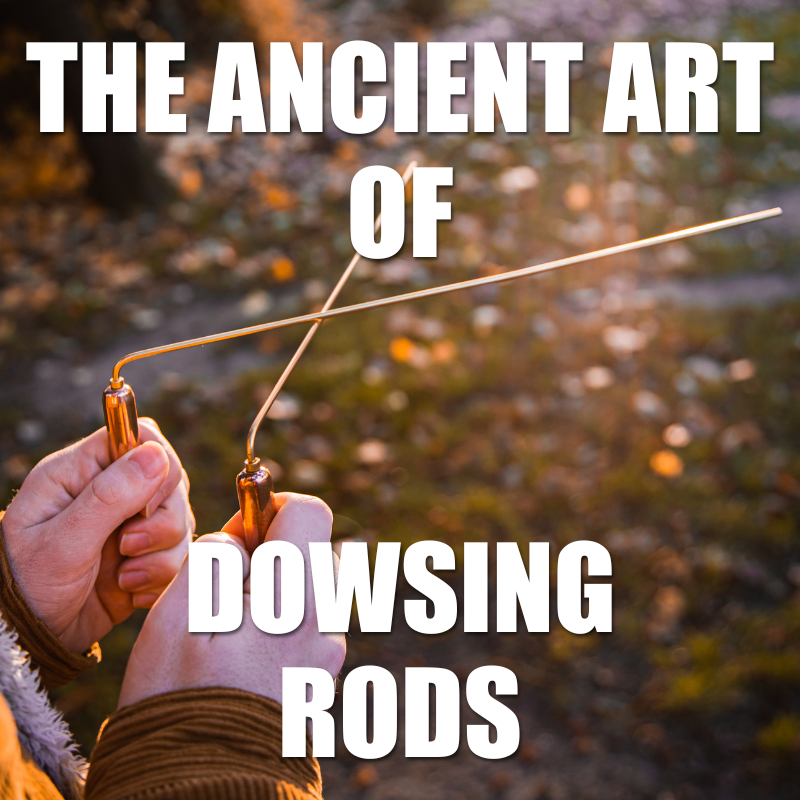Exploring the Ancient Art of Dowsing Rods
Posted by Magickal Bear

 Dowsing rods are tools used for centuries to locate hidden objects, energies, or resources such as water, minerals, and even spiritual energies. Often made of metal or wood and shaped like an “L” or "Y", these rods respond to subtle energetic shifts in the environment. While dowsing has its roots in ancient practices, many modern spiritualists use them today for both practical and metaphysical purposes. Some use dowsing rods to find underground water, while others use them to communicate with spirit guides, locate energy blockages, or receive intuitive guidance.
Dowsing rods are tools used for centuries to locate hidden objects, energies, or resources such as water, minerals, and even spiritual energies. Often made of metal or wood and shaped like an “L” or "Y", these rods respond to subtle energetic shifts in the environment. While dowsing has its roots in ancient practices, many modern spiritualists use them today for both practical and metaphysical purposes. Some use dowsing rods to find underground water, while others use them to communicate with spirit guides, locate energy blockages, or receive intuitive guidance.
Many people believe that dowsing rods work by amplifying the subconscious mind’s ability to detect energy. Others think they are attuned to the Earth's natural energies or divine communication. Regardless of the belief, many users report meaningful and accurate results. Dowsing can be a deeply personal experience, requiring patience, practice, and trust in one’s intuition. Before beginning, it’s helpful to ground yourself, set a clear intention, and ask for guidance or protection.
Using dowsing rods is a practice that combines intuition, subtle energy awareness, and intention. To begin, most people choose a quiet, undisturbed space where they can focus without distractions. Dowsing rods are typically held loosely in each hand, with the arms relaxed at your sides and elbows bent at about a 90-degree angle. The rods should be parallel to the ground and allowed to move freely. It's important not to grip the rods too tightly because holding them gently allows them to respond naturally to the environment and the energy around you.
Before you start asking questions or searching for energy, it's helpful to ground yourself. This can be done through a few deep breaths, a short meditation, or by simply setting a clear intention. To use dowsing rods, a person typically holds one rod in each hand, allowing them to move freely. The rods may cross, separate, or move in specific directions in response to questions or energies. Practitioners often begin by asking for a clear yes or no to establish what each rod movement means for them. For example, crossed rods might mean “yes,” while open rods indicate “no,” though this varies with each user. Again, the key is to be calm, centered, and open to receiving subtle energetic cues without consciously manipulating the rods.
In spiritual practices, dowsing rods are also used in energy healing, space clearing, and aura reading. For example, a practitioner might use the rods to find areas of stagnant energy in a room or around the body. Some also use them in conjunction with crystals or other tools to enhance their spiritual work. You can walk slowly through a space, holding the rods steady, and observe if they cross or react strongly in certain spots. These movements may indicate places where energy needs to be cleared or healed. Similarly, when working with a person, the rods might respond differently near certain chakras or parts of the aura, giving insight into energetic imbalances or emotional blocks.
Dowsing can also be used as a tool for decision-making or connecting with spiritual guides. Some practitioners ask questions out loud, while others simply think them internally. It’s important to stay neutral, open, and trusting of the process. Doubt, tension, or overly strong emotions can interfere with the results. After a session, it's good practice to thank your guides or the energies you’ve worked with and to cleanse the rods, some people do this by smudging them with sage or placing them on a piece of selenite.
Ultimately, using dowsing rods is a personal and intuitive experience. With practice, many people find that the rods become a reliable tool for navigating both practical concerns and spiritual insights. Whether you're using them to find water, receive answers, or tune into unseen energies, they offer a unique way to explore the hidden layers of the world around—and within—you. As with any energy-based practice, patience, respect, and an open mind are key to developing your skill and connection.

